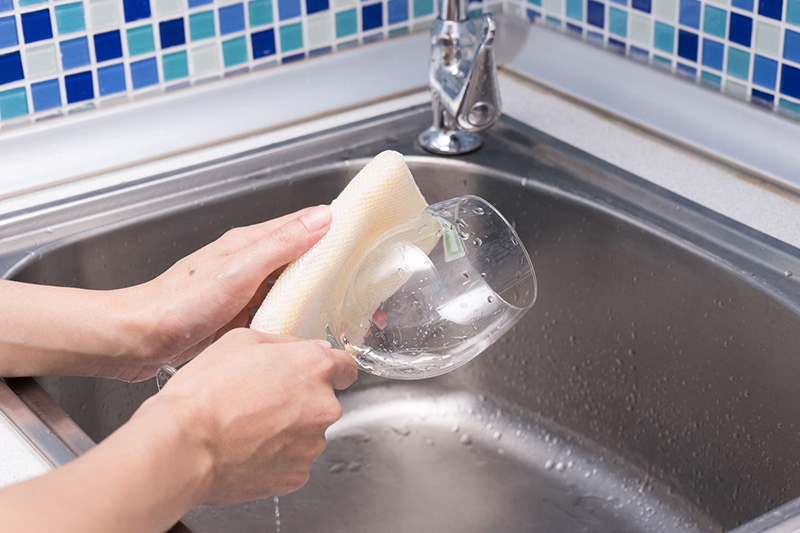
Wine enthusiasts and casual drinkers alike know the importance of a clean wine glass. The right glass not only complements the wine but also enhances its aroma and taste. However, improper cleaning can lead to residues that detract from the wine's flavor and aroma. Whether you're using delicate crystal stemware or sturdy everyday glasses, proper care is essential. This comprehensive guide will take you through the steps to ensure your wine glasses are always pristine, from basic washing to removing stubborn stains and preventing cloudiness.
The Importance of Clean Wine Glasses
Wine glasses, regardless of their type, should be sparkling clean to provide the best drinking experience. Residual wine, dust, or detergent film can alter the taste and presentation of the wine. Therefore, it's crucial to clean glasses after every use and periodically, even if they haven't been used, to maintain their clarity and hygiene.
How Often to Clean Wine Glasses
After Each Use:
It's best to wash wine glasses immediately after use. This prevents wine residue from drying and becoming harder to clean. Additionally, switching between different types of wine—such as moving from white to red or vice versa—requires a fresh, clean glass to avoid cross-contamination of flavors.
Regular Maintenance:
Even if stored in a closed cabinet, wine glasses should be cleaned at least once a year. This routine cleaning removes dust and any potential pollutants that could cause etching or cloudiness over time. It's also advisable to wash glasses after unpacking them post-move, as they may have accumulated dust or been exposed to harsh conditions.
Essential Tools and Materials
To properly clean wine glasses, you'll need a few basic tools and materials:
-
Large Sink or Plastic Tub: A dedicated area to clean glasses without risk of chipping or breaking.
-
Rubber Sink Mat: Protects the glass from contact with hard surfaces.
-
Microfiber Towels: Lint-free and soft, ideal for drying and polishing glasses.
-
Wine Glass Brush: Designed to clean the delicate contours of wine glasses without scratching.
-
Mild Dishwashing Liquid: Gentle enough to clean without leaving a harsh residue.
-
Distilled White Vinegar: A natural cleaner that helps remove tough stains and cloudiness.
-
Baking Soda: Combined with vinegar, it's excellent for removing stubborn wine stains.
Step-by-Step Cleaning Guide
1. Prepare the Sink or Tub
Start by filling your sink or plastic tub with warm water. Place a rubber mat or dish towel at the bottom to cushion the glasses. Add just a drop or two of mild dishwashing liquid; you don't need much soap to clean wine glasses effectively.
Tip: Avoid using abrasive sponges or harsh chemicals, as they can scratch the glass and leave permanent marks.
2. Hand Wash the Glasses
Gently submerge the glasses in the soapy water. Use a wine glass brush or a soft, non-abrasive scrubber to clean the inside of the bowl, paying special attention to the rim, where wine stains can often accumulate. For stemmed glasses, hold them securely by the bowl to prevent the stem from snapping.
Note: Do not hold the glass by the stem or base while washing, as this can increase the risk of breakage.
3. Rinse Thoroughly
Rinse the glasses with warm water, ensuring that the water temperature is consistent with the washing water to avoid thermal shock, which can cause cracks. Thorough rinsing is essential to remove all soap residues, which can affect the taste of the wine.
4. Dry with Care
Immediately dry the glasses with a clean, lint-free microfiber towel. Hold the glass by the bowl and gently wipe it down, including the stem and base. This step prevents water spots and leaves the glass sparkling clean.
5. Removing Tough Stains and Cloudiness
If you've left wine glasses sitting overnight, they may develop stubborn stains, particularly from red wine. To tackle these:
-
Warm Vinegar Method: Heat a bottle of distilled white vinegar by placing it in a microwaveable bowl of water or in a pan of simmering water on the stove. Once warm, pour the vinegar into the glasses or a tub, and soak the glasses for about an hour. This helps dissolve tough stains.
-
Baking Soda Treatment: For persistent stains, add a teaspoon of baking soda to the warm vinegar in the glass. The chemical reaction will help lift the stain. Use a wine glass brush to scrub gently, then wash, rinse, and dry as usual.
Caution: This method can be too harsh for delicate glassware, like champagne flutes, which may shatter due to the reaction.
6. Clearing Cloudy Film
Cloudiness on wine glasses is often due to mineral deposits from hard water or residual detergent film. To clear this:
-
Soak the glasses in warm distilled white vinegar for 15-30 minutes.
-
Rinse thoroughly with warm water and dry with a microfiber cloth.
For an alternative, rubbing alcohol can also be used to remove cloudy films. However, vinegar is generally the safer and more effective option.
Tips to Keep Wine Glasses Crystal-Clear
-
Hand-Wash Promptly: Clean glasses as soon as possible after use to prevent stains from setting.
-
Minimal Detergent Use: Less soap means less residue, which can cloud the glass.
-
Consistent Water Temperature: Always use warm water for washing and rinsing to avoid thermal shock.
-
Regular Vinegar Soaks: An annual vinegar soak can prevent cloudiness and maintain clarity.
Conclusion
Proper care and cleaning of wine glasses are essential for preserving their beauty and functionality. By following these guidelines, you can ensure that your glasses remain in perfect condition, ready to enhance your wine-tasting experience. Remember, the key is gentle handling, using the right cleaning agents, and drying them carefully to prevent spots and streaks. Whether you're a casual drinker or a wine connoisseur, maintaining clean wine glasses is a small yet significant part of enjoying wine to its fullest. Keep your glasses crystal-clear, and savor every sip of your favorite wines.